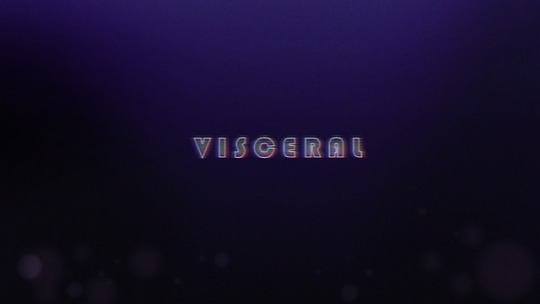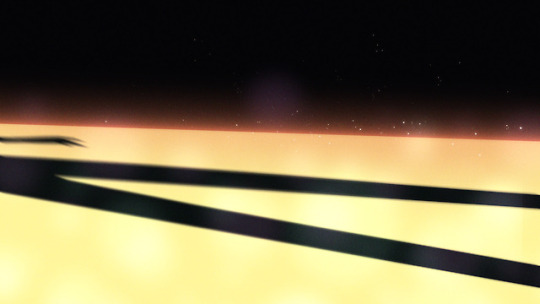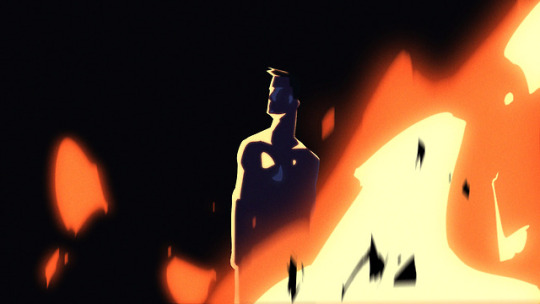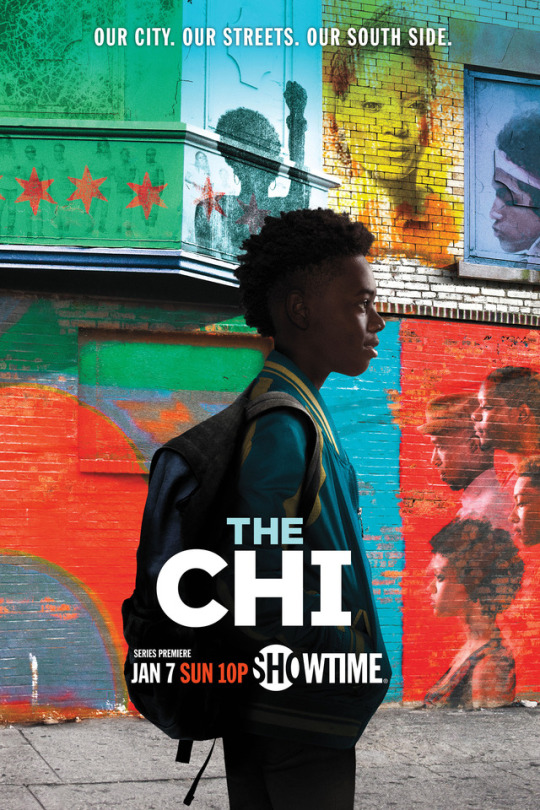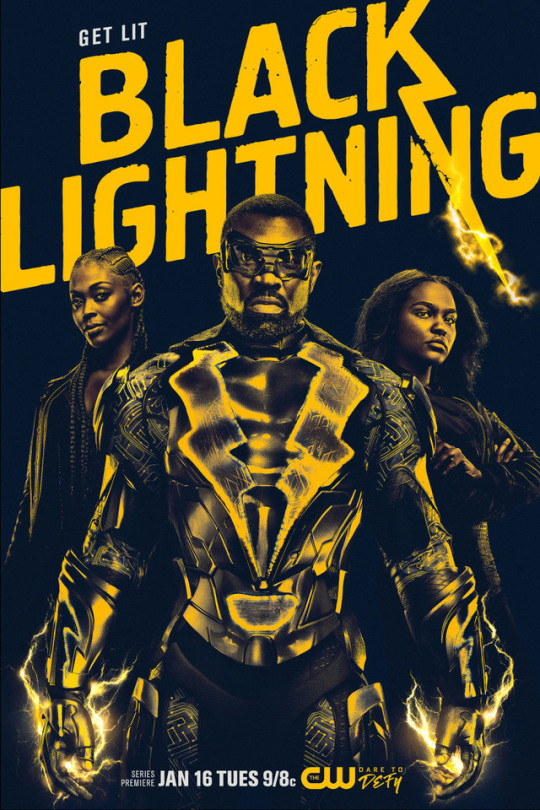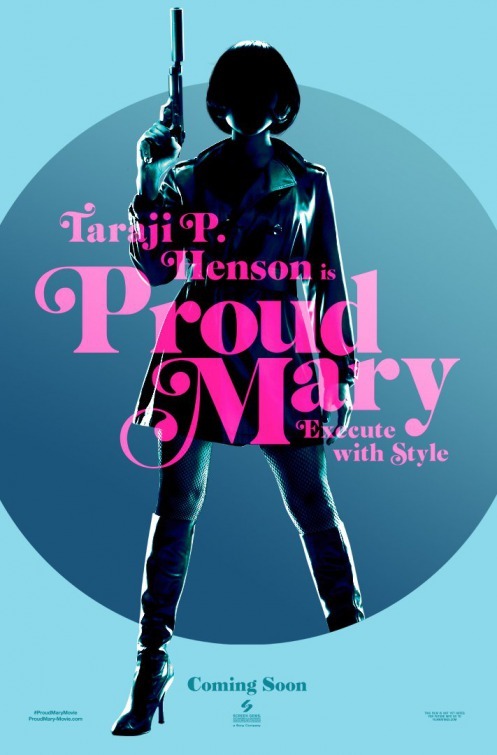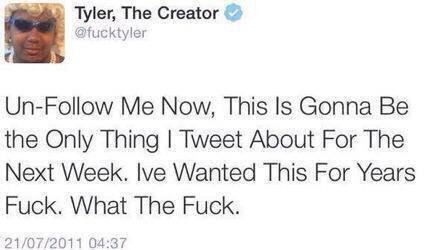Text
"Every fiber of relationship is worth a dramatic study"
‘Our lives are filled with endless moments of stimulus and depression. We relate to each other in an incredibly complicated manner. Every fiber of relationship is worth a dramatic study. There is far more exciting drama in the reasons why a man gets married than in why he murders someone. The man who is unhappy in his job, the wife who thinks of a lover, the girl who wants to get into television, your father, mother, sister, brothers, cousins, friends - all these are better subjects for drama than Iago. What makes a man ambitious? Why does one girl always try to steal her kid sister’s boy friends? Why does your uncle attend his annual class reunion faithfully every year? Why do you always find it depressing to visit your father? These are the substances of good television drama; and the deeper you probe into and examine the twisted, semiformed complexes of emotional enanglements, the more exciting your writing becomes.’
- Paddy Chayefsky, “The Television Plays”
8 notes
·
View notes
Text
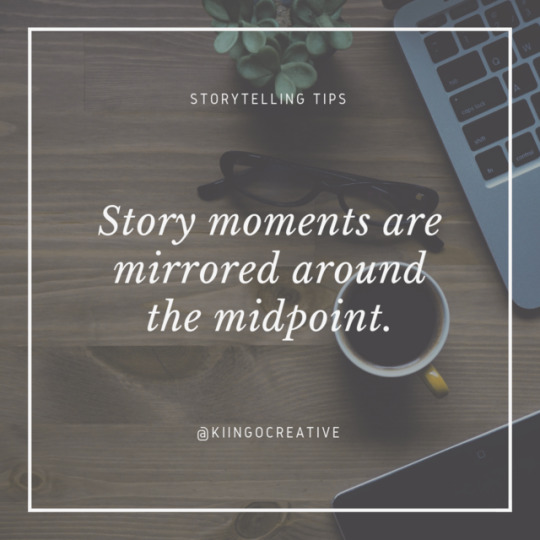
Using a 5 act structure, John Yorke has this to say about mirrored moments in story, “If you take any archetypal story and imagine folding it over on itself at the midpoint, it’s possible to see with far greater clarity just how great story’s aspiration for symmetry is. Not only do the first part of act one and the last part of act five mirror each other, but act four becomes a mirror of act two, and one half of the third act, bisected at the midpoint, becomes a mirror image of the other. … In a second act, protagonists move towards and embrace commitment; while act four works the other way: faced with overwhelming odds, the commitment is tested and as the worst point nears, abandonment is considered. … As in the story structure, so in its participant elements. If Darryl is the one who is slighted by Thelma at the end of act two of Thelma & Louise, then at the end of act four Darryl will be playing a significant role in tracking Thelma and Louise down; Rosencrantz and Guildenstern attend Hamlet in act two; in act four they die.” Symmetry is pleasing and one way to incorporate it in your story is to mirror important events around the midpoint.
60 notes
·
View notes
Video
youtube
Another creator vid!
Today The Legend of Korra and Avatar: The Last Airbender creators michaeldantedimartino and bryankonietzko talk about pitching the world of Avatar, and their advice for getting started in animation.
225 notes
·
View notes
Text
How TV Cartoons Are Made - A (Mostly) Simplified Guide
When I was in school and wanted to work in animation, there was very little information about how cartoons are actually made. Even my professors at college knew very little about the industry as it is today. I’m sure it would’ve been better to study somewhere in California (like CalArts) to be better informed about this stuff, but I didn’t have that opportunity.
Nowadays, many kids in school have a dream career that they don’t really know much about. There’s a lot of missing bits of information and a lot of straight up lies that get circulated as fact as people try to scramble to put the pieces together on how cartoons for television are actually made.
I’ve been storyboarding for television for a while now, and there still aren’t clear resources for those wanting to get into the industry. I wanted to make the basics available to everyone, so here’s a quick rundown through the TV pipeline. Please note: all studios and productions are different. Even cartoons made within the same studio could have wildly different production guidelines. This is not a concrete explanation of how every cartoon is made; this is simply a generalized look at the “typical” television pipeline.
**DISCLAIMER** All images in this post have been sourced from blogs, twitters, scribd and flickr pages are publicly available, and no internal studio materials have been used that have not been already published publicly online. This post is influenced heavily by my own individual experience, as well as friends’.
With that said, this might be a lengthy read, so let’s go!
Keep reading
19K notes
·
View notes
Photo

“Think outside the box” decided to turn this one into an animated gif
376 notes
·
View notes
Text
Breaking Writing Rules Right: "Show, don't Tell"
8 times you need to use Telling in your writing.

It’s one of the first rules of creative writing you’ll hear. It may be the rule you hear the most: “Show, don’t tell.”
Today I’ll explain what that rule means, why it’s in place, and then why following it too closely can actually harm rather than help your writing.
There are places in writing where telling is just frankly better, and even more powerful.
What’s the Rule?
The Rule:
Show, don’t tell.
Why it’s a Rule
Honestly, almost any beginning writer who is getting into writing needs to hear this advice, and probably several times. When I was in college, this was like scripture. I heard it every week, if not every day. This is because naturally, we are wired to “tell” a story rather than “show” one. Telling is easier, and if we don’t know the difference, we just do what’s natural and easy.
But what is the difference? And why does it matter which you use?
Here is an examples of telling:
Emily was tired.
Here is how you would change that example into showing:
Yawning, Emily dragged her backpack on the way to her bedroom. Her eyes drooped shut with each step. She fell into her bed and her shoes blackened the covers. She rubbed her eyes–mascara gritted against her skin–then flung her arm over her face to block out the light.
In my second example, I don’t just tell the reader Emily is tired, I show them. There are a few reasons to do this. First, if I simply say “Emily was tired,” as an audience, we don’t get a visual for what “tired” is, how tired Emily is, or what kind of tired she feels. It’s vague and general. Is Emily a bored kind of tired? Or physically tired from running a mile? Or sleepy-tired? But when I show it, it’s clear she’s sleepy-tired. How sleepy-tired? Tired enough that she can’t pick up and carry her backpack, so tired that her eyes droop shut and she doesn’t bother to take off her shoes before “falling” into bed. She doesn’t even wash off her makeup or turn off the room’s light.
That’s how tired.
Second, when you show instead of tell it immerses the reader into the story so that they feel like they are experiencing it instead of just reading about it. It’s like they are there in the house with Emily, or are Emily herself. One of the ways to do this well is to appeal to the senses: sight, sound, touch, smell, and taste. In my second example, I appealed to the senses of sight and touch. (In contrast, in my first example, I appealed to no senses.) It’s important to immerse the reader, so that they are experiencing the emotions in the story. If you “tell” them everything, you’re (almost) never putting the emotions in the reader, so the story won’t be as powerful. When you “show” the story to the reader, you are allowing them to interpret and come to their own conclusions, rather then you telling them what to think and believe. They become the character.
If telling still doesn’t seem that “bad” to you, look at what bland telling looks like sentence after sentence in this example:
They went to their friend’s house to see some cats. They liked them a lot. When they got tired, they called their mom to pick them up, but their mom couldn’t come for two hours. It was cold out, so they went inside and got something warm to eat. Then they drew some pictures before watching t.v.
How much emotion do you feel from that? Do you feel like you are in the story? Does it have you on the edge of you seat? Probably not.
Most all beginning writers write stories this way, which is why learning to show, not tell, is preached just about everywhere. Telling is easy. Showing takes work.
But like any writing rule, if you treat this one like a commandment, it can actually hurt your writing and take the power out of your story.
Why You Need Telling
Here is why you need telling.
Keep reading
14K notes
·
View notes
Video
youtube
Our new game is In the Valley of Gods, a single-player first-person adventure set in Egypt in the 1920s. You play as a disgraced former filmmaker and explorer, reunited with your old partner for a project that could leave you with fame and fortune—or dead and buried in the sand.
We’re currently developing the game for Windows, Mac, and Linux, with any potential future platforms yet to be determined. There’s a tentative release target of 2019, but that could change. Just like with Firewatch, follow our progress here on the blog and our Twitter account for the latest news and behind-the-scenes development. In the Valley of Gods is an adventure unlike anything we’ve ever made and we can’t wait for you to play it.
12K notes
·
View notes
Photo
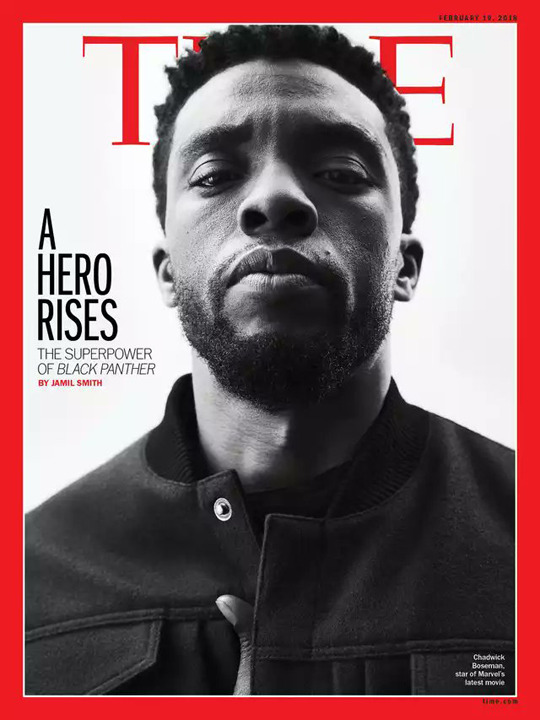

Black Panther becomes the first MCU film to be featured on Times Magazine’s Cover.
29K notes
·
View notes
Video
instagram
I LOVE TANK AND THE BANGAS
91K notes
·
View notes
Video
youtube
Daniel Kaluuya: Marvel’s ‘Black Panther’ Going to “Change The World” | NAACP Awards 2018

Daniel Kaluuya of Marvel’s ‘Black Panther’ joins The Hollywood Reporter on the red carpet of the 2018 NAACP Image Awards
678 notes
·
View notes
Photo

“My absolute dream is to create my own television show.”
Sometimes I’ll get an email from someone who likes what Frederator does and would like to know something about the cartoon business. In this case it’s a college senior in an animation program (who’d corresponded with me when he was in high school) who’s working on his senior thesis film and would like to create his own series someday.
These questions were really good and reflected some of the issues that many students from outside the industry are concerned with when their only insight comes from reading. In this case I felt like the inquiries were a little too concerned with the ‘how’ of selling a series.
Here are the questions and my answers.
As a bonus, I’m adding some smart thoughts from Frederator’s Eric Homan, our head of development and creative affairs.
How is Frederator specifically able to take what is intended to be a 15-30 minute episode and shorten it into 2-3 minutes while keeping the integrity of the story/implying a larger universe within the possible show?
We never do what you’re suggesting.
1) Frederator asks for a 6 minute cartoon short pitch (that is, when we’re in a cycle of shorts production like Oh Yeah! or Too Cool! or GO! Cartoons). It’s not a random length, it’s approximately how the great theatrical shorts were produced and I’ve always figured, steal from the greatest. If it were completely in my control, I’d always make 6 minute cartoons, but most of the world wants 11s. That being said, we want to know there are great characters we love, and a filmmaker who has control of his/her situation on film.
2) As a producer who wants to see the most for the least, I’ve tried to do 2-3 minute cartoons for 25 years. Filmmakers resist, as do my smarter-than-me development colleagues, correctly, because in three minutes it’s way harder for one to truly get a sense of character (the most important thing, in our opinion). A short film like that tends towards the punch line, the gag, which, while it can be hilarious, gives you no sense of how the character behaves, what it wants, how it really moves throughout a film.
3) The one time we agreed to produce a 20 minute storyboard and cut it down for 6 minute production there was really a problem (the first Powerpuff Girls short). What had been a clean, coherent story was truncated, almost impossible to follow. Almost killed the potential series.
I would suggest that you don’t want a film to be anything but the greatest it can be for whatever format you choose. If it’s going to be two or three minutes, try and map out the greatest two minute cartoon you can muster.
Don’t think about what it could be in another format. You’ll inevitably fail at both.
I have two characters in my series who would occur in every episode of my theoretical show and be extremely important. I also believe these characters have not only mascot capability, but toy line possibilities in this magical theoretical world in which my show were to get picked up.
Stop worrying about the “pick up.” Maybe it’ll happen, maybe it won’t. Make a great f-ing film, full stop. That’s the most likely thing to help your future, a wonderful picture.
Sure, it’s possible your characters are wonderful enough for a future (it’s happened a few times for creators we work with, but it’s extremely rare, maybe 1%. 1%! But showing you’re a talented filmmaker gives you the most opportunity.
I’ll add that a lot of creators are convinced of the “toy line possibilities” of their cartoon characters. But you know, if the cartoon doesn’t succeed, there are no toys. And even if it does, successful cartoons often don’t translate into toy sales. Seriously.
Should I get rid of these characters in my thesis and focus on a good short film, or is it worth it to take the time to keep them in, as a way to help the producers better visualize the dynamic of the show?
Stop with the worrying about producers. Create a great short. See above.
OR would telling any producer this much detail just scare them off?
I would only be repeating myself.
Also, I was wondering about pitch meetings; first off, how does one go about getting a pitch meeting?
You call every development department at every studio or network you can locate and ask for a meeting. Some will see you (like Frederator), many won’t. If they do, you’ll be ask to sign a legal release that says they’ve probably seen characters and ideas like your before (it’s true, though very few believe it) and you won’t sue if something similar turns up in a production schedule 1000 years from now.
I realize that it is a lot of who you know, but what kind of channels should I take to go about getting my work out there?
A lot of it is who you know. But, an email address on YouTube will net you 1 billion potential viewers around the world. A few of them are producers or development executives. They’re even some watching other video platforms.
Festivals, local animation events, conferences are good places to expand the “who you know” category.
My favorite advice, which all filmmakers reject, is to get a low level job at a studio to meet people who have trod the same path as you’re going to go on. They’ve all been there and, in my experience, are incredibly generous with new generations of ambitious, hard working people. There really are worse routes to travel.
Should I get an agent, or try to crowd source it, in hopes that it gains traction?
You should try everything. It can be frustrating and painful, but what’s great that isn’t?
Should I submit it to the New York pilot episode film festival? If that’s a good route, are there any other festivals you would recommend me submitting to, or are those submission fees just a waste of money?
Try everything and anything. You have nothing to lose, everything to gain.
Finally, let’s say I find a genie and use one of my wishes for a pitch meeting? How many ideas for the series should I walk in with, to show I’m passionate about this project, while not scaring them off or making the producer feel like they can’t get their hands in it?
If producers are scared of you, they’re not the producers for you.
My personal advice is to go in with the project you most believe in. Since it’s unlikely (not impossible) you’re going to sell it anyway, gauge how producers feel about the thing you feel best about. If they don’t understand it, they’re not for you. On the other hand, their critiques could be useful, if you’re open enough to actually hear it.
Should I tell them about toy ideas or an app idea that could partner very nicely with the show? Or should I leave those ideas for later and keep them in my pocket?
Up to you. As I wrote up above, my experience is that many creators are positive the toys are going to be major sellers (seldom true with comedies, by the way) and honestly, at the initial stage, I could care less. We’re focused on whether or not we want to work with the creator, is the film going to glorious, do we love the characters. The more someone has thought about merch, in my mind (probably untrue) the less they’ve thought about the actual film.
>>>>>>
(Even better) advice from Frederator’s Eric Homan:
If you’re interested in being a successful cartoon creator, maybe research your favorite animators, cartoonists, and artists and find out how they trained and got to where they are today. While there isn’t one true path to success, you’ll sure find some commonalities that should help you along the way. For instance, you should really work on those drawing and filmmaking skills. You don’t have to be the best artist in the world, but if you look at your favorite cartoons—and most successful ones—you’ll probably find most were created by cartoonists.
Today, with streaming services and the Internet, past constraints in which properties need to fit—including demographics and length of not only episodes but also in “seasons"—are falling by the wayside. Every executive will ask you how you envision your work being told, but more and more we’re seeing what works best for your story and characters dictate length, not the other way around.
Frederator is focused on falling in love with characters. If there’s anything in a pitch that overwhelms them, consider scaling back the non-character elements or work on your characters. Probably both. You want to give executives just enough to get them excited to see more, or enough that she can then pitch the idea to her boss. Like Winston Churchill said, "A good speech should be like a woman’s skirt; long enough to cover the subject and short enough to create interest.”
Not working for a toy-driven studio, I tune out when creators being to talk about merchandise. If you’re pitching to studio where merchandise is a key factor to a “yes,” I can pretty much guarantee you the folks you’re pitching to will have a strong sense of what properties are better for toys and such.
I would always start with just one pitch, your favorite. This is especially true for new people in the room, whether creators or executives. The feedback you receive on that one pitch will help you craft your second.
In general always being working on the those non-creative things, too, that will make executives want to work with you, including responsibility, relationships, and resume.
145 notes
·
View notes
Photo
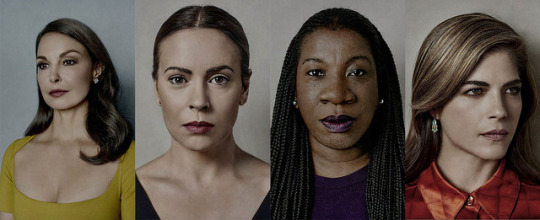

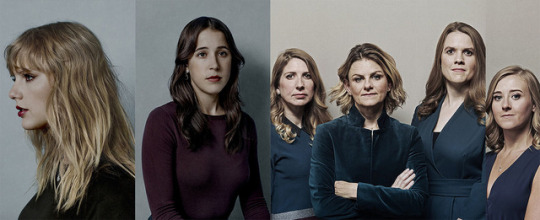
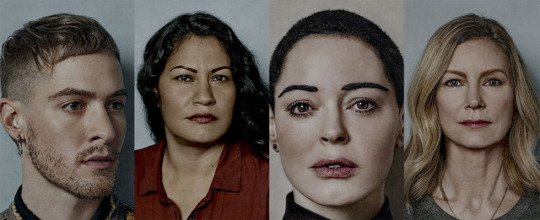
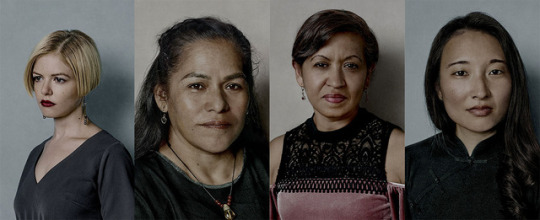
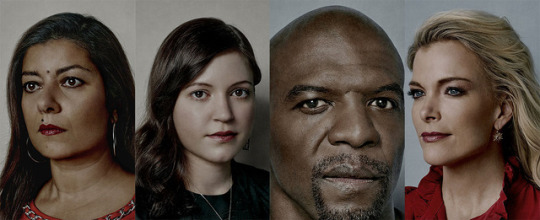
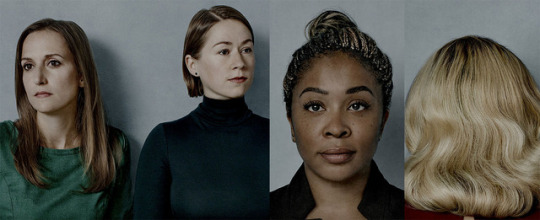
TIME MAGAZINE’S PERSON OF THE YEAR 2017:
THE SILENCE BREAKERS
Time has announced that their choice for 2017′s Person Of The Year is The Silence Breakers - a collective term for all the people who spoke out about sexual harassment this year, creating a culture that aims to encourage victims to speak up, free of shame, and hold perpetrators accountable for their actions, regardless of their power.
Better still, though the piece itself is diverse in its portrayal of victims of different gender identities and races, and of different socio-economic statuses, the article takes cognisance of the gendered nature of sexual harassment - in that women are disproportionately victims of sexual harassment at the hands of men - by being conceived, reported, and written entirely by women. From fact-checking, to video-editing, to designing the layout and photo spread, everything about this article was created by women.
41K notes
·
View notes
Video
youtube
TIME Person of the Year 2017: The Silence Breakers | POY 2017 | TIME
4K notes
·
View notes
Video
I will break my fucking wrist reblogging this every time i see it.
149K notes
·
View notes
